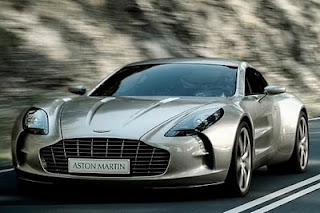Audi A4 - doesn't miss a beat
 |
| Audi A4 - doesn't miss a beat |
The A4 strikes this balance nicely. It's a well-built, comfortable and competent sports sedan. In base form it's not heavy on the gee-whiz equipment, but there's enough poise and capability to keep you from wondering where your $34,000 went. When pushed the A4 is happy to show off some significant engineering prowess as well. Raise the equipment level and the A4 serves adeptly as a junior luxury sedan.
The A4 is one of the most handsomely proportioned cars Audi's ever built. Everything seems to be just-right, from the large, four-ringed grille and strip of LED driving lights that produce Audi's signature face to the just-right greenhouse and stubby trunk. The standard seventeen-inch wheels are sized just right to give the A4 a sporty look, and the rocker panel has a rising character line in lieu of tacky body cladding to enhance the dynamic, athletic stance. The A4 exudes the same luxury and competence shown by its larger siblings.
The interior is similarly handsome, with a deeply sculpted upright dash. The A4's cockpit is very businesslike; the available navigation system is mounted high up, while the third-generation version of Audi's Multi-Media Interface (MMI) system makes switching between accessory functions easy. Brushed aluminum accents on the instrument panel and console prevent the A4's interior from becoming a black cavern when the darkest of the three interior color choices is selected. Audi provides little touches like touch-to-pass turn signals, steering wheel audio controls and auto-up and down windows that give the A4 a subtle upscale feel. A 505-watt Bang & Olufsen sound system is optional.
The standard engine in the new A4 is Audi's 2.0 liter turbocharged direct-injection four-cylinder. The 2.0 is dramatically responsive--the 211-horsepower peak rating may not be the highest, but the A4 moves out with impressive urge. The direct gasoline injection system and a turbocharger designed to deliver peak torque at low revs mean that responsive power is available at almost any engine speed, and the A4 isn't shy about acceleration. Three transmissions are offered: front-wheel drive A4s get a continuously variable gearbox, while quattro all-wheel drive models offer a choice of six-speed manual or eight-speed automatic gear shifting. The six-speed manual allows the 2.0 to be relaxed at full gallop on the freeway and provides impressive fuel economy; the automatic is available with paddle shifters for more engaging driving.
Connecting the wheels to the road is a sophisticated fully independent suspension. The A4's road manners illustrate the company's racing and sports-car experience, because this car is tossable and responsive without being uncomfortable. It's very difficult to get bad attitude from the suspension, which consists of a five-link arrangement up front and trapezoidal arms at the rear. Lightweight aluminum components help to keep the weight manageable and the A4 responsive. The dynamic steering varies the effort by speed and is equally quick to respond. Anti-lock brakes are standard, as is Audi's ESP stability control system. To further sharpen the A4's edge, Audi offers a Sport package that adds selectable steering and powertrain response and a sport rear differential that "shuffles" torque from wheel to wheel and helps eliminate understeer.
While the A4 is designed for driving enjoyment and will appeal to enthusiasts, it's well-equipped with driver aids that make life in the crowded suburbs somewhat easier, too. The available backup camera provides a clear view to the rear, while Audi's side alert system keeps an eye on the blind spots. Adaptive cruise control is also on the menu. There's even a power trunklid on the options list.
Compact luxury isn't easy to do, thanks to a plethora of capable competitors. As a result, the Audi A4 can't afford to miss a beat. If it does, the BMW 3-Series, Infiniti G37, Mercedes C-Class, Volvo S40 and Cadillac CTS are poised to pounce. Audi's clearly aware of this fact, and the freshened 2011 A4 can easily be said to be at the top of its game. Enjoyable, dynamic performance, a surprisingly powerful yet efficient engine and elegant styling inside and out keep it firmly on my list of desirable real-world vehicles. A4 quattro pricing starts at $32,850 with a manual transmission and $34,140 with the eight-speed Tiptronic.
All specifications are for the 2011 Audi A4.
Length: 185.2 in.
Width: 71.9 in.
Height: 56.2 in.
Wheelbase: 110.6 in.
Curb weight: 3626 lb.
Cargo space: 12.0 cu.ft.
Base price: $32,850
Price as tested: $38,255
Engine: 2.0 liter DOHC turbocharged and intercooled inline four-cylinder
Drivetrain: six-speed manual, all-wheel drive
Horsepower: 211 @ 4300-6000
Torque: 258 @ 1500-4200
Fuel capacity: 17.2 gal.
Est. mileage: 21/31












